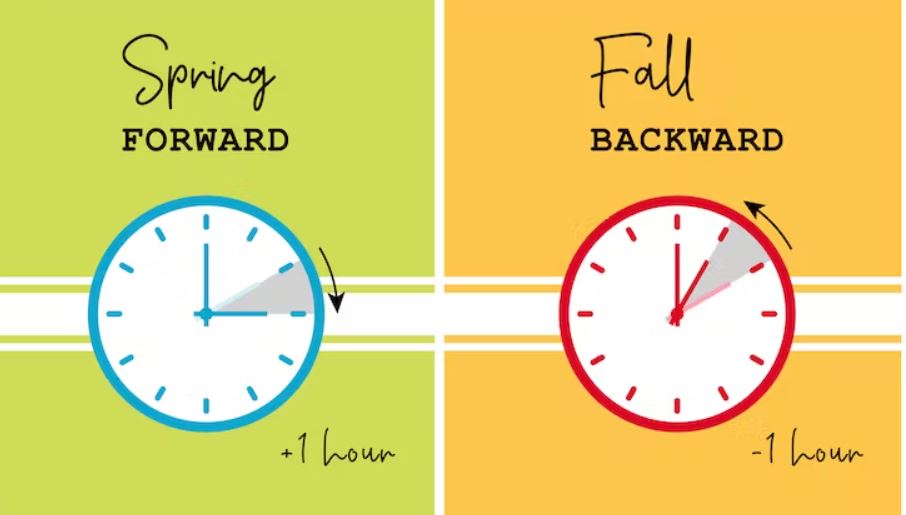Permanent daylight saving time? Where efforts to ‘lock the clocks’ stand?
Daylight Saving Time 2023(US)
Began Sunday, March 12
Ends Sunday, November 5
Daylight saving time (DST) is the practice of setting clocks forward by one hour during the summer months, typically from March to November, in order to extend the amount of daylight available in the evenings. The idea of DST has been around for centuries, with the earliest recorded proposal dating back to the 18th century. Today, DST is observed in many parts of the world, although not all countries participate.
Table of Contents
The concept of DST Daylight saving time:
The concept of DST Daylight saving time is based on the idea that it can save energy by reducing the need for artificial lighting during the evening hours. By extending the amount of daylight available in the evenings, people may be less likely to use electricity to light their homes, businesses, and other public spaces. In addition, DST can also lead to greater productivity and more outdoor activities, as people have more time to enjoy the daylight after work or school.
Despite these concerns, many countries around the world continue to observe DST. In Europe, for example, DST is observed in most countries, although some countries have opted out of the practice. In North America, most US states and Canadian provinces observe DST, although there are a few exceptions. In South America, DST is observed in Brazil and some other countries, while in Asia, DST is observed in some countries such as Japan, South Korea, and parts of China.

There are also some countries that have recently made changes to their DST policies. In 2019, the European Union voted to abolish DST by 2021, citing health concerns and public opposition to the practice. However, this decision has since been delayed due to the COVID-19 pandemic. In 2020, Russia announced that it would no longer observe DST, citing the same health concerns as the EU.
Difference between Non DST and DST setting:
Before applying daylight saving time in one country suppose Germany has time 1.00 am and the country which is not effected the DST suppose India at the same time will have time 5.30 am, so the difference between these two country at the same time is 4.30 hour , but after applying DST the all clock is adjusted 1 hour forward in DST zones ,so the difference between these two countries will be 3.30 hour.
Here are some key points about Daylight Saving Time (DST):
- DST is the practice of setting clocks forward by one hour during the summer months and back by one hour in the fall.
- The primary purpose of DST is to save energy by extending the amount of daylight available in the evening.
- DST is observed in over 70 countries around the world, including the United States, Canada, and most of Europe.
- There are arguments for and against DST. Supporters argue that it can save energy and increase productivity, while opponents argue that it can disrupt sleep patterns and be confusing and inconvenient.
- In the United States, DST begins on the second Sunday of March and ends on the first Sunday of November.
- Some countries or regions do not observe DST, which can lead to confusion when scheduling international travel or conducting business with people in different time zones.
- There have been calls to eliminate DST altogether, but whether or not to observe DST is a decision that should be made based on the needs and preferences of each individual country or region.
Start and End of Daylight saving Time:
The start date of Daylight Saving Time (DST) depends on the country and region. In the United States, DST starts on the second Sunday of March each year, while in Europe it usually starts on the last Sunday of March. However, it is important to note that not all countries or regions observe DST, and some have different start dates or may not observe it at all. It is recommended to check with local authorities or reliable sources for the specific start date of DST in your area.
Controversies:
Most of the European countries dislike the Daylight saving Time DST . The practice of DST has been controversial in recent years, with some arguing that it disrupts sleep patterns and has negative effects on health, productivity, and safety. As a result, some European countries have considered or implemented changes to their DST practices, including ending it altogether or adjusting the dates and times of the clock change.
The practice of DST is not universally embraced, however. Critics argue that the energy savings are minimal, and that the disruption to people’s schedules can lead to health problems such as sleep deprivation and increased risk of heart attacks. Some also argue that DST can have negative impacts on agriculture, as farmers may need to adjust their schedules to accommodate the change in daylight hours.
Conclusion:
DST is a widely practiced but somewhat controversial concept around the world. While it can provide benefits such as energy savings and increased productivity, it also has drawbacks such as health concerns and potential impacts on agriculture. Whether or not to observe DST is ultimately a decision for each country to make based on their individual circumstances and priorities.
FAQs:
Q: What is Daylight saving Time?
Answer: Daylight saving Time DST is the practice of setting clocks forward by one hour during the summer months and back by one hour in the fall.
Q: Start and End of Daylight saving Time?
Answer: The start date of Daylight Saving Time (DST) depends on the country and region. In the United States, DST starts on the second Sunday of March each year, while in Europe it usually starts on the last Sunday of March, and some have different start dates or may not observe it at all.
Q: Why Daylight saving Time?
Answer: The primary purpose of DST is to save energy by extending the amount of daylight available in the evening, during summer.
Do the clocks go back or forward an hour?
Answer: Remember which way the clocks changes the seasons: in spring the clocks ‘spring forward’, while in autumn they ‘fall back’.
When do the clocks go back in 2023?
In autumn 2023 the clocks will go back on 29 October at 2am.
Q: Do we lose or gain an hour of sleep tonight?
Answer: Yes, The clocks are moving forward that means you will lose an hour of sleep, as you usually wake-up time at of 8 a.m. will now be 9 a.m. on 12 March, making you late for whatever your plans are. This is the beginning of Daylight Saving Time which will be last through the beginning of November.
Q:What countries use Daylight Savings Time?
Answer: All European Union countries and many European non-member, The United States ,Canada, also changing the clocks is practiced in Paraguay, Haiti, Chile, the Levant, Cuba, New Zealand and some parts of Australia.

